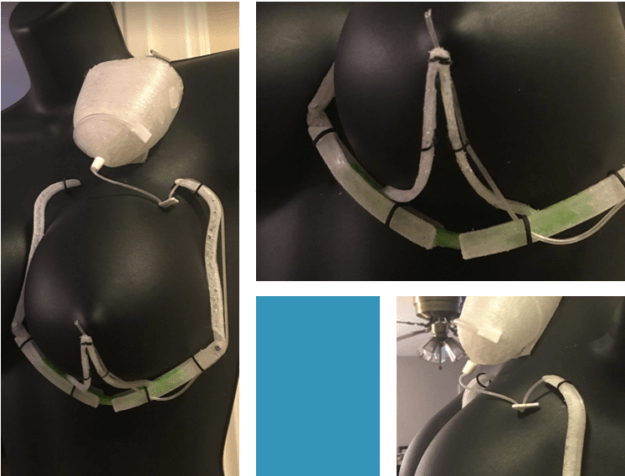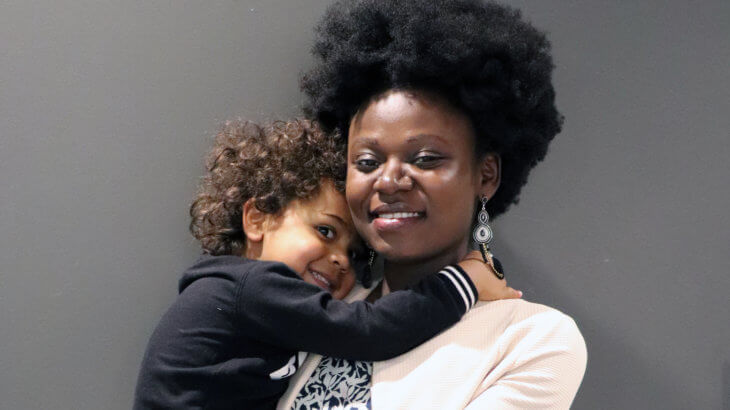Started by University of Utah MBA student Nana Ewusi-Emmim two years ago, NipaYe is a breastfeeding-help company focused on assisting mothers to produce milk for their babies. With help from the Lassonde Entrepreneur Institute, she is developing a tool she hopes will be more comfortable and easier to use than what is currently on the market.
Ewusi-Emmim found issues with the current at-the-breast supplemental method following the birth of her first child. She discovered he was starving because he wasn’t getting enough milk. With some research and experimentation, she saw that the current products on the market were not optimal for her needs.
“I started to wonder why there isn’t something better on the market and that is what caused me to start this project,” she said.
Current breastfeeding tools do not cater well enough to what many mothers need. Existing products are susceptible to leakage and attach to the breast by taping down tubes, which can be uncomfortable. The tape cannot be attached too close to the nipple because of sensitivity, and it can be difficult to adjust the tubes while holding a baby.
“Oftentimes these products cannot be used in public,” she added. “It is for in-house use. Mothers are not comfortable using it in a public setting because of the messy, convoluted nature of it all.”
Ewusi-Emmim collaborated with a lactation-specialist who provided insight on development. She also reached out to the public and received strong feedback — “I surveyed 100 mothers and they told me what they wanted to see in a new breastfeeding aid and what they do not appreciate in the current ones,” she said. Talking to mothers has been a great guide in project development.
In her research, 92 percent of mothers initially have trouble producing breastmilk for the baby. Often, mothers struggle through finding a way to increase milk production or give up, switching to bottle feeding.

NipaYe prototype
Nipaye’s current prototype is designed to fix the issues through a focus on ease of use and comfort.
Comfort, cleanliness, and ease of use are attained by avoiding unnecessary leakage and better attachment to the breast. To this end, the tool is designed for different sizes of breasts and variety of nipple positions. A brace is outfitted around the breast to increase support and a cradle tilts to the correct angle. As Ewusi-Emmim explained, “We are not only supporting mothers who have standing breasts but also those who have relaxed breasts.”
Breastmilk can have many benefits for babies over traditional formula, which is why Ewusi-Emmim wants to help mothers produce their own. Infants that are breastfed are less likely to become sick because of antibodies that are in breastmilk. Current research indicates that breastmilk is better than traditional formula; both for the baby and the mother. Mothers who struggle to breastfeed are more likely to suffer postpartum depression.
In October 2018, Ewusi-Emmim pitched the product at the Lassonde Institute’s Get Seeded monthly pitch event. She won $2,500, which she plans to use for buying materials and paying for the engineering help in prototyping. Then, in January 2019, she won third place and $1,000 in the Lassonde Institute’s Opportunity Quest competition. Beyond the monetary gains, she also says that pitching was a great confidence boost, and she is excited to continue her work. Being part of the Lassonde Institute’s Company Launch program also gave her the motivation to apply for grant opportunities and continue to push forward in development. “Without Company Launch, I am not sure if we would’ve done Get Seeded when we did,” she said.
Ewusi-Emmim is currently in the process of building the first functional prototype. For the prototype, she needs to find the correct materials to use and then build a mold for it. She has gone through a few iterations on the design and has outsourced some design work to an engineer who is helping build the prototype. “We have narrowed down a design, but we are looking for the right materials to prototype with,” she said. “We are limited on the materials we can actually use in prototyping.”
NipaYe’s current goal is prototyping and testing with friends and family. “After that, it is all about bringing all the pieces and parts together,” Ewusi-Emmim said. “We want to do real clinical testing on mothers.” NipaYe is excited to soon bring everything together and reach out to the public for more extensive testing.
Learn more about NipaYe at nipaye.com.



